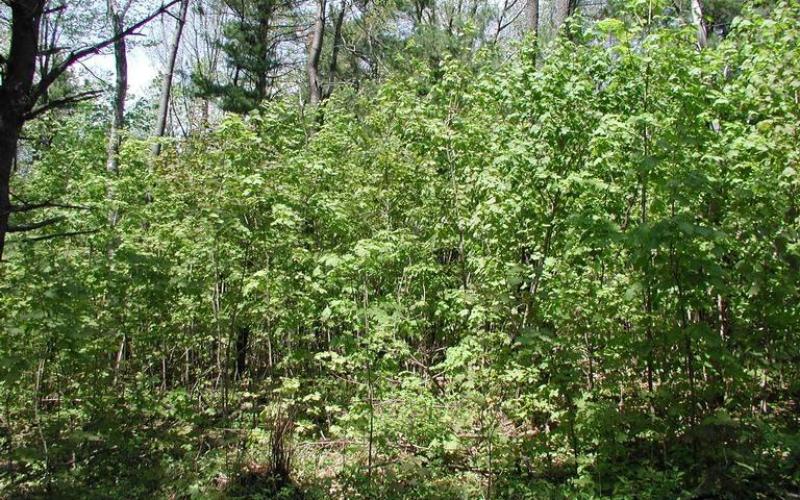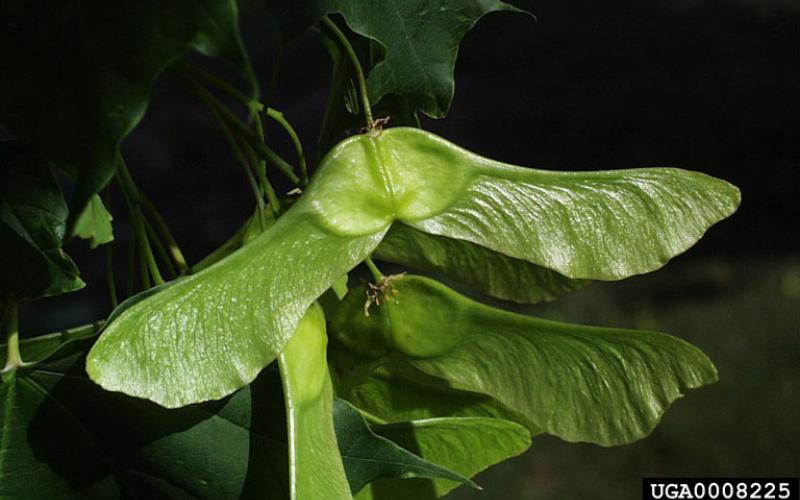Common name: Norway maple
Scientific name: Acer platanoides L.
Synonyms: 'Crimson King', 'Columnare', 'Erectum', 'Olmsted', 'Drummondii', 'Emerald Queen', 'Globosum', 'Schewedleri', and 'Summershade', and any other cultivar capable of producing viable seed.
Related species: Sugar maple, red maple, silver maple, black maple, mountain maple; non-native ornamental maples
Legal status
Any person, corporation, business or other retail entity distributing Norway maple or its cultivars for sale within the state, must have information directly affixed to the plant or container packaging that it is being sold with, stating the following: “Norway maple should only be planted in areas where the seedlings will be controlled or eradicated by mowing or other means. Norway maple should not be planted closer than 100 yards from natural areas.”
Background
The first documented Norway maple introduction to North America was in 1756. It has naturalized in Great Britain, the northeastern United States, and southeastern Canada. Norway maple is widely planted as a shade tree in urban areas because it can tolerate drought, deicing salt, compacted soils, and air pollution. Norway maple has many cultivars with distinct forms including columnar, and weeping varieties. Another distinct characteristic is the green to burgundy range in leaf color.
Description
- Norway maple is a large shade tree usually growing 40-60 feet tall but can grow up to 90 feet or more.
- Branching is opposite. Young bark is olive to light brown and becomes gray and furrowed with age.
- Naturalizing Norway maple could be confused with the native sugar maple.
- Key characteristics to distinguish from the native sugar maple are the angle of the samara, width of leaves, and white sap of leaves, petioles, and twigs.
Habitat
Norway maple is adaptable to many growing conditions. It grows in full sun or shade and is found naturalizing in forests, particularly within disturbed understory.
Means of spread and distribution
Norway maple was introduced to North America as a shade tree valued for its form and adaptability. It is relatively fast growing and was widely planted as a replacement tree for American elms.
Impact
Norway maple can produce abundant seed, form dense monocultures, and outcompete other species. This could reduce the number of native species which would reduce the quality of the local ecosystem.
Prevention and management
- Follow the label instructions when planting Norway maple; do not plant within 100 yards of any natural areas where seedlings would not be controlled. There are a variety of native species that can be substituted for Norway maple. You can find these recommendations on the Minnesota DNR website.
- Small infestations can be controlled manually by digging and removing the root crowns. Saplings are easily pulled by hand or controlled by mowing.
- Prescribed burning can be an effective method of control on established populations. Make sure to contact the Minnesota Department of Natural Resources to learn more about control burning practices and regulations.
- Infestations can be controlled by cutting and treating the stumps with herbicide or basal bark spray treatments. For specific herbicide recommendations, check with your local University of Minnesota Extension agent, co-op, or certified landscape care expert.



